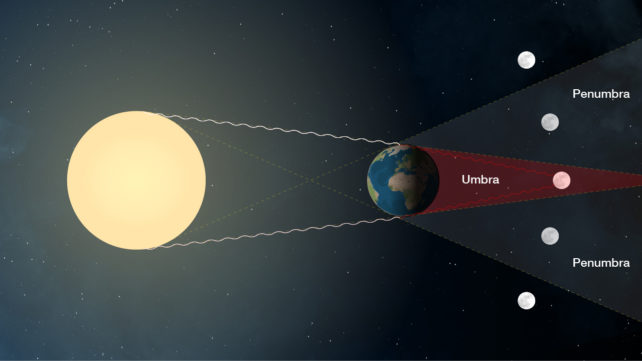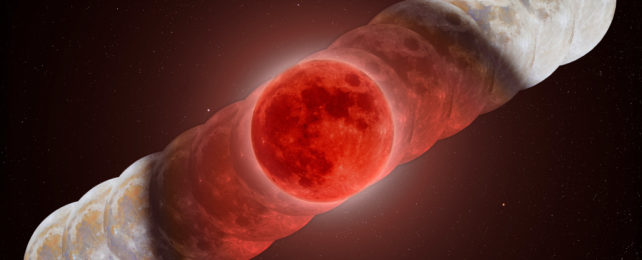We've seen some great images from the total lunar eclipse this week. But this one might top them all.
Astrophotographer Andrew McCarthy created this incredible composite image, showing the Moon in various stages of the eclipse throughout the night.
"The size and shape of Earth's shadow is clearly visible here," McCarthy said on Twitter. "These events are absolutely magical to witness and quite surreal."
McCarthy witnessed and photographed the entirety of the eclipse from his backyard in Arizona. Besides the noticeable 'band-aid' shape of the image, if you look closely, you can see exactly how the Moon moved through Earth's shadow throughout the eclipse.
The other striking feature of this composite is just how crisp, clear and detailed each image of the Moon is. How did McCarthy do it?
My finished shot from this morning's total lunar eclipse. This image was captured by using two telescopes, one to capture intricate detail on the lunar surface, and one to capture the rich tones cast by Earth's shadow across the disc. Go ahead, zoom in on it! pic.twitter.com/XpXcqihiId
— Andrew McCarthy (@AJamesMcCarthy) November 8, 2022
McCarthy said he did this three times throughout the night. Then, he used his Sony a7ii camera mounted to a 8-inch Celestron EdgeHD800 telescope at 2000 mm to capture the entire Moon with great resolution at each capture, which took around 500 photos throughout the night.
Then, these images were combined with a previously captured high-resolution photo of the Moon to provide incredible detail to create the final composite, which was assembled in Photoshop from these images.

McCarthy calls the photo "Shadows and Sunsets," as during a total lunar eclipse, the Moon shines in the colors from all the sunrises and sunsets occurring on Earth.
The Moon looks reddish because Earth's atmosphere absorbs the other colors while it bends some sunlight toward the Moon. Sunlight bending through the atmosphere and absorbing other colors is also why sunsets we see here on Earth are often orange and red.
Prints of this image are available in limited quantities on McCarthy's website.
"The full-size image is nearly 190 megapixels, so it is insanely detailed and can print up really huge without losing detail!" McCarthy said on Twitter.
Support McCarthy on Patreon to download high-resolution versions of his photography. He said he knows this hobby is expensive, and requires gear to improve my images.
A composite image from this morning's eclipse showing the moon in various stages throughout the night. The size and shape of Earth's shadow is clearly visible here. These events are absolutely magical to witness and quite surreal. pic.twitter.com/mbakrEyCYl
— Andrew McCarthy (@AJamesMcCarthy) November 8, 2022
"However as I got deeper into this hobby it became apparent this is my calling, so I am leaning on my patrons to help support me as I begin doing this full-time," he says on his website.
McCarthy said he bought his first telescope in 2017 and became hooked on observing and astrophotography, saying that now his mission is to "connect people with the universe and to inspire a new generation of celestial explorers."
He even moved to a new state to have a better view of the night sky.
"Making sure I can shoot events like this uninterrupted is part of the reason I recently moved to Arizona," McCarthy explained.
"I constructed a simple observatory in my backyard which has two permanent piers inside it, allowing me to safely run equipment the entire night and easily close up at dawn (or during bad weather). While these were captured from home, I was prepared to travel across the country if weather didn't look favorable."
McCarthy has put together a great thread on Twitter, answering his most often-asked questions and suggesting what type of gear is needed to do the type of astrophotography he does.
This article was originally published by Universe Today. Read the original article.
